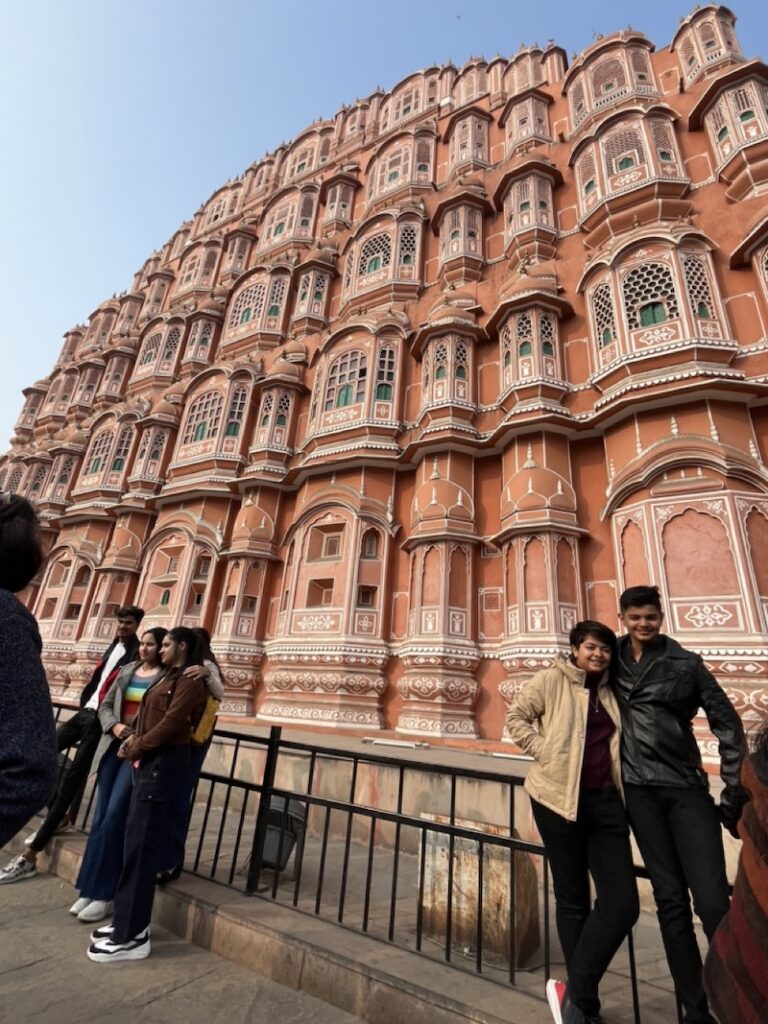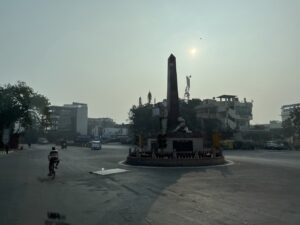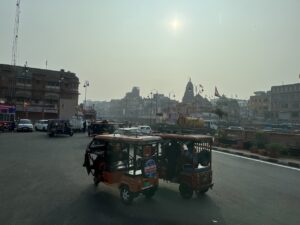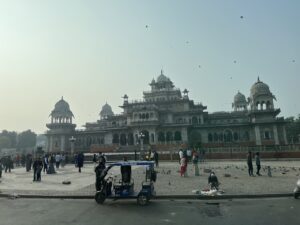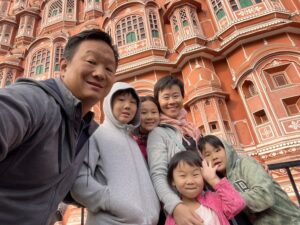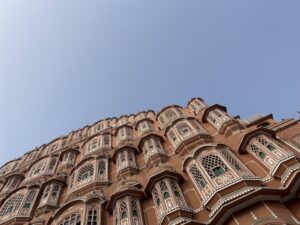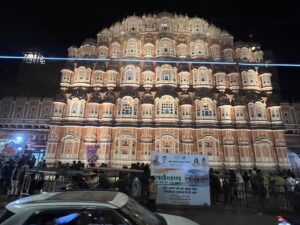We arrived in Jaipur after a four-hour drive from Ranthambore. Jaipur is known as the “Pink City” but describing Jaipur as “pink” would be somewhat of a stretch. Think salmon, not bubblegum.
Jaipur, Rajasthan’s most populous city, was established in 1727 by Mahraja Sawai Jai Singh. We were amused to learn that prior to becoming Jaipur, this area was called Amber. In Rajasthani, “amber” means “sky”.
On the day that we arrived, the sky could barely be seen through the gray smog.
Jaipur would be the last stop of our reunion trip with the rest of Leo’s family as they would soon be heading back to New Delhi and then home. For us, it was just the beginning of our month traveling through Rajasthan and Kerala.
The most famous building in Jaipur and possibly in all of Rajasthan is Hawa Mahal or Palace of the Wind. It was built in 1799 in red sandstone as a five-story extension of the women’s chambers in the City Palace. The lattice windows of the Hawa Mahal would allow the women of the royal household to watch what was happening in the bazaar below without being seen.
Most commonly associated with Islam, the shielding of women behind screens and veils from strangers is called “purdah”. This practice is also observed by some Hindus in India. Some might assume that purdah was introduced to India by the Mughals, but most historians agree that it had been practiced well before the Mughals set foot in India. It was actually introduced to India by the Arabs and Turks during the Middle Ages. By the 13th century, purdah had already spread to parts of northern India among the upper-class. Although it may have started as a way to protect Hindu women from invaders, it evolved to become a status symbol among wealthy families. A few centuries later, during the Mughal dynasty, the practice became fully entrenched as the Rajput royalty adopted many of the customs and habits of the Mughals.
The area in front of the Hawa Mahal was packed with tourists, most of them Indian. It was actually hard to get a full view of the building because there was only a narrow sidewalk for viewing and snapping pictures. You couldn’t step back to get a wider view because just beyond the narrow sidewalk was the busy street. People were jockeying for the best positions to snap pictures of themselves and their families without interference from other tourists. We were doing exactly the same.
Later that night, on the way back to the hotel, we drove by the Hawa Mahal again and from this vantage point, it looked absolutely exquisite. The whole building was illuminated and from this distance, we could see the colored glass and intricate lattice work on the windows. Just as it was designed, it was impossible to see inside. It was a gilded cage for women of means, but without many choices.
Author
-

Song is the mother of four children. She and her family have stepped away from it all and in September 2023, began traveling the world while homeschooling. Song is an ABC (American born Chinese) and has an undergraduate degree from Cornell and an MBA from Harvard. She is an entrepreneur and an educator. Her hobbies include learning, traveling, reading, cooking and baking, and being with children.

